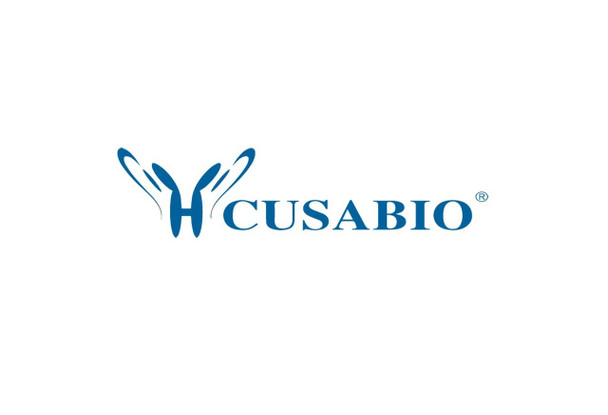Cusabio Human Recombinants
Recombinant Human Kallikrein-7 (KLK7), partial | CSB-EP012458HU
- SKU:
- CSB-EP012458HU
- Availability:
- 13 - 23 Working Days
Description
Recombinant Human Kallikrein-7 (KLK7), partial | CSB-EP012458HU | Cusabio
Alternative Name(s): Serine protease 6Stratum corneum chymotryptic enzyme ;hSCCE
Gene Names: KLK7
Research Areas: Cancer
Organism: Homo sapiens (Human)
AA Sequence: DKIIDGAPCARGSHPWQVALLSGNQLHCGGVLVNERWVLTAAHCKMNEYTVHLGSDTLGDRRAQRIKASKSFRHPGYSTQTHVNDLMLVKLNSQARLSSMVKKVRLPSRCEPPGTTCTVSGWGTTTSPDVTFPSDLMCVDVKLISPQDCTKVYKDLLENSMLCAGIPDSKKNACNGDSGGPLVCRGTLQGLVSWGTFPCGQPNDPGVYTQVCKFTKWINDTMKKHR
Source: E.coli
Tag Info: N-terminal GST-tagged
Expression Region: 28-253aa
Sequence Info: Partial
MW: 51.7 kDa
Purity: Greater than 90% as determined by SDS-PAGE.
Relevance: May catalyze the degradation of intercellular cohesive structures in the cornified layer of the skin in the continuous shedding of cells from the skin surface. Specific for amino acid residues with aromatic side chains in the P1 position. Cleaves insulin A chain at '14-Tyr-|-Gln-15' and insulin B chain at '6-Leu-|-Cys-7', '16-Tyr-|-Leu-17', '25-Phe-|-Tyr-26' and '26-Tyr-|-Thr-27'. Could play a role in the activation of precursors to inflammatory cytokines.
Reference: Vaspin inhibits kallikrein 7 by serpin mechanism.Heiker J.T., Kloting N., Kovacs P., Kuettner E.B., Strater N., Schultz S., Kern M., Stumvoll M., Bluher M., Beck-Sickinger A.G.Cell. Mol. Life Sci. 70:2569-2583(2013)
Storage: The shelf life is related to many factors, storage state, buffer ingredients, storage temperature and the stability of the protein itself. Generally, the shelf life of liquid form is 6 months at -20?/-80?. The shelf life of lyophilized form is 12 months at -20?/-80?.
Notes: Repeated freezing and thawing is not recommended. Store working aliquots at 4? for up to one week.
Function: May catalyze the degradation of intercellular cohesive structures in the cornified layer of the skin in the continuous shedding of cells from the skin surface. Specific for amino acid residues with aromatic side chains in the P1 position. Cleaves insulin A chain at '14-Tyr-|-Gln-15' and insulin B chain at '6-Leu-|-Cys-7', '16-Tyr-|-Leu-17', '25-Phe-|-Tyr-26' and '26-Tyr-|-Thr-27'. Could play a role in the activation of precursors to inflammatory cytokines.
Involvement in disease:
Subcellular Location: Secreted
Protein Families: Peptidase S1 family, Kallikrein subfamily
Tissue Specificity: Abundantly expressed in the skin and is expressed by keratinocytes in the epidermis. Also expressed in the brain, mammary gland, cerebellum, spinal cord and kidney. Lower levels in salivary glands, uterus, thymus, thyroid, placenta, trachea and testis. Up-regulated in ovarian carcinoma, especially late-stage serous carcinoma, compared with normal ovaries and benign adenomas (at protein level).
Paythway:
Form: Liquid or Lyophilized powder
Buffer: If the delivery form is liquid, the default storage buffer is Tris/PBS-based buffer, 5%-50% glycerol. If the delivery form is lyophilized powder, the buffer before lyophilization is Tris/PBS-based buffer, 6% Trehalose, pH 8.0.
Reconstitution: We recommend that this vial be briefly centrifuged prior to opening to bring the contents to the bottom. Please reconstitute protein in deionized sterile water to a concentration of 0.1-1.0 mg/mL.We recommend to add 5-50% of glycerol (final concentration) and aliquot for long-term storage at -20?/-80?. Our default final concentration of glycerol is 50%. Customers could use it as reference.
Uniprot ID: P49862
HGNC Database Link: HGNC
UniGene Database Link: UniGene
KEGG Database Link: KEGG
STRING Database Link: STRING
OMIM Database Link: OMIM









